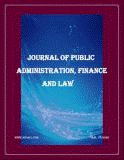HYBRID METHODOLOGY AND MATERIAL CHANGE OF INTEREST RATE BENCHMARKS
HYBRID METHODOLOGY AND MATERIAL CHANGE OF INTEREST RATE BENCHMARKS
Author(s): Michał KruszkaSubject(s): Business Economy / Management, International relations/trade, EU-Approach / EU-Accession / EU-Development, Financial Markets, Accounting - Business Administration
Published by: Editura Tehnopress
Keywords: Interest rate benchmark; EURIBOR; LIBOR; material change;
Summary/Abstract: The development of financial markets over the past several decades pointed out a very important role of financial benchmarks, which are used as a reference price for financial instruments or to determine interest payments. However, after the global financial crisis, allegations emerged that interbank interest rate benchmarks had been manipulated. A significant decrease in the size of interbank transactions was observed as well. Both elements lower the credibility of the interest rate benchmarks used so far. Taking into account the responsibility for financial stability, the EU bodies adopted a regulation on benchmarks (BMR) in 2016. The main purpose of this paper is to provide an analysis of this piece of legislation from the perspective of legal continued viability of interest rate benchmarks. The main subject of the analysis was the development of the EURIBOR and LIBOR methodology. The results of the analysis showed that the new hybrid methodology, which utilises eligible transaction data, transaction-derived data, and databased expert judgement, is a robust evolution of the quote-based methodology. It means that administrators did not change benchmark’s underlying interest, and no one should diagnose the risk to the continued viability of EURIBOR and LIBOR rates.
Journal: Journal of Public Administration, Finance and Law
- Issue Year: 2020
- Issue No: 17
- Page Range: 233-247
- Page Count: 15
- Language: English

